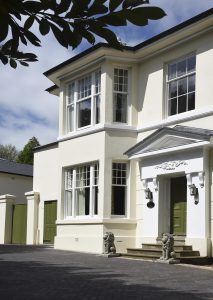What is a conservation area?
A conservation area is an area of land which local authorities protect due to certain historical or architectural interests. In a nutshell, they ensure any enhancements are in keeping with the general character and aesthetic of the area and prevent things looking out of place. There are over 10,000 of these in the UK, and incidentally Stamford in Lincolnshire was the first conservation area to be designated under the Civic Amenities Act 1967.

Stamford; a conservation area within Lincolnshire.
What do they cover?
They cover aspects such as the layout of roads, trees, gardens, street surfaces, building materials and the general design of shop fronts within a specific area. Individual buildings tend to be covered more by the listed buildings process, however these are often found within conservation areas. For example, the public library is a listed building within the conservation area of the town of Stamford.
Who designates conservation areas?
Local councils are typically the ones who designate conservation areas, and can vary from the centres of historic towns or cities, fishing and mining villages, model housing estates, country houses or industrial heritage sites.
How do you find out if you’re in a conservation area?
The easiest way to find out if your property falls within a conservation area is through your local planning authority – if it does, this will impact any alterations which can be made to it, including to your windows and doors…
The impact on your windows & doors
Windows and doors are far more than just a means to allow people, wind or sunlight in or out of a property. They play a huge part in the design and aesthetic of a building, and being in a conservation area can determine which adjustments are allowed to your doors and windows.
This doesn’t mean you can’t make changes; it means it’s more difficult as you need permission to do so. This is due to something called an Article 4 Direction, which restricts work you can normally do without the need for planning permission.
Typically, the detail in the glass, framing and finish of the window should be kept similar to the appearance of the original windows on the building, and also in a way that complements the surrounding buildings. For example, Belton House near Grantham wouldn’t be able to install brand new, shiny white uPVC windows as this clearly wouldn’t complement the original landscape of the building.
It is also important to avoid any damage to the original materials used in the windows; surviving historical panes, as well as the craftsmanship involved with designing these, are extremely valued and can create historical interest.
It is a similar story when it comes to doors, especially a front door to a building. Wherever possible, historic doors should be kept as they are, along with their furniture; a knob, knocker and letterbox. Again, this is to maintain the character and authenticity of the location, particularly because front doors are often the most prominent aspect about a building. If a door is damaged and cannot be repaired, it is often advised it is replaced with a copy of the original.
 In summary…
In summary…
Being in a conservation area doesn’t mean changes can’t be made to your windows and doors, but it does mean that changes have to complement the existing features of the building and the surrounding area. It is crucial that you check with your local authority before going ahead with any amendments.
How can we help?
We offer a range of timber windows & doors which have been specially designed with listed buildings & conservation areas in mind and have gained positive feedback and approval from planning authorities across the UK.
Our aim is to provide timber windows and doors that not only satisfy these conservation rules but also enhance your home – improving insulation, sound proofing and day-to-day operation – whilst maintaining an authentic appearance for many, many years to come.








